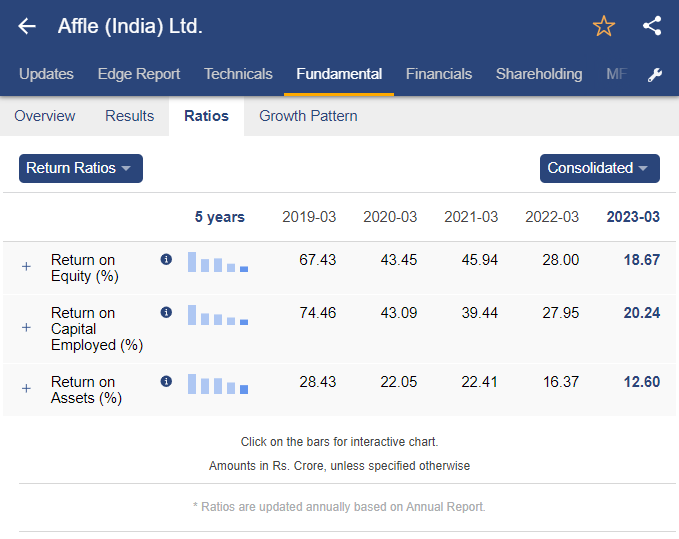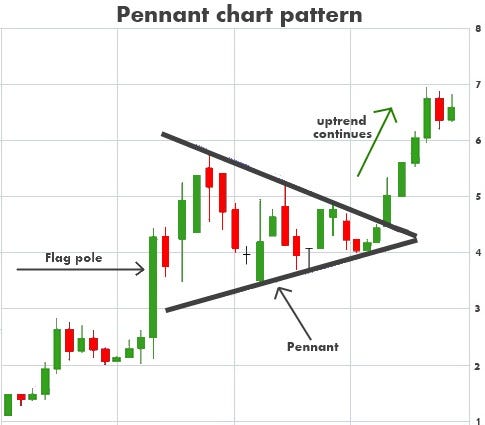It is important to verify the accuracy of AI trading platforms which predict and analyze the price of stock. This will ensure you are using an accurate tool. Here are the top 10 methods to assess these platforms.
1. Backtesting Results
What to look out for: See whether the platform provides backtesting to test how its predictions have performed based using the past data.
What is the significance of backtesting? Backtesting is a way to test an AI model by comparing its predictions against the results of previous tests.
Tip: Look for platforms that let you modify the parameters of backtesting (e.g., time periods, asset classes).
2. Real-Time Monitoring of Performance
What to look for Check how the platform performs in the market in real-time.
Why it matters Real-time performance gives a more accurate gauge of its efficiency instead of relying solely on past backtesting.
Tip: Use an account demo or free trial to track the real-time forecasts and compare them with actual market fluctuations.
3. Prediction Error Metrics
What to look for Utilize metrics like Mean Absolute Error or Root Mean Squared Error or R-squared, to determine the accuracy of your predictions.
Why it is Important: The metrics measure the accuracy of predictions, compared to actual results.
Tip: Platforms that publicly disclose these measurements are more transparent.
4. The rate of winning and the success ratio
What to Look For Look for the platform's win rate (percentage of correct predictions) and success ratio (profitability of trades that are based on forecasts).
Why It Matters : A high success ratio and win rate indicates a higher degree of predictive accuracy and consequently, a greater chance of profitability.
TIP: Beware of websites that boast unrealistic winning rates (e.g. 90%) %+), since the system cannot be perfect.
5. Benchmarking using Market Indices
What to look out for Check the platform's predictions and performances to major market indices like S&P 500 or NASDAQ.
What is crucial because it allows you to determine if the platform is performing better than (or is underperforming) the wider market.
Tips: Don't just focus on short-term gains, but also consistent performance over a longer period.
6. Consistency of Market Conditions
What to look for What to look for: Find out how the platform's performance is affected by different market conditions (bull or bear markets or high volatility).
Why It Matters It is important that the platform be able to function in all types of market conditions, not only when the market conditions are favorable.
Tip: Test the platform's predictions during market conditions that are volatile or when there is a period of low volatility.
7. Transparency in Methodology
What to look out for: Know the AI algorithms and models used (e.g. neural networks or reinforcement-learning).
Why It Matters Transparency is crucial because it helps you determine the accuracy and reliability of the platform.
Avoid platforms that employ "black box models" that don't clarify how to generate predictions.
8. Tests by independent experts and User Reviews
What to look for: Read customer reviews and independent tests, or third-party assessments.
What is important: Independent testing and reviews offer unbiased information about the reliability of the platform.
Check user reviews in forums such as Reddit copyright and financial blogs.
9. Risk-Adjusted Returns
What to look out for You should look for risk-adjusted measures like the Sharpe Ratio (or Sortino Ratio), to assess the platform's performance.
What is important The metrics are based on the amount of risk is taken in order to earn returns. This gives the most complete image of performance.
Tips: A high Sharpe Ratio (e.g., above 1) indicates better risk-adjusted returns.
10. Long-term Track Record
What to Look For : Compare the platform's performance for a long time (e.g. over three or five years).
What is important: Long-term performance is a better indicator of reliability than results from the short-term.
Beware of platforms that showcase only results that are short-term or cherry-picked.
Bonus Tip Test with Demo Account
Test the platform's real-time predictions with a demo or trial account, without having to risk your real money. This gives you the chance to evaluate the accuracy and effectiveness.
By following these tips by following these guidelines, you can fully evaluate the accuracy and performance of AI stock predicting and analyzing platforms. Make sure you select one that matches your goals in trading and your risk tolerance. Be aware that no platform can be trusted. Therefore, combining AI insight and your own research along with the predictions made by the platform is typically the best choice. Check out the recommended ai copyright trading bot info for website examples including coincheckup, ai stock, copyright advisor, best ai stock trading bot free, best ai stock trading bot free, using ai to trade stocks, chart ai trading, getstocks ai, ai stock prediction, stock analysis tool and more.

Top 10 Tips For Evaluating The Risk Management Of Ai Stock Predicting/Analyzing Trading Platforms
A platform for trading that makes use of AI to forecast or analyze stocks must have a solid risk management system. This can protect your capital, and help minimize any potential losses. A platform that is equipped with powerful tools for managing risk can aid in the navigating of unstable markets and help users to make better decisions. Here are 10 tips on how to assess the risk management capabilities of the platform.
1. Review Stop-Loss Features, Take-Profit Features
Levels that can be customized - Make sure that the platform allows you customize your stop-loss, take-profit and profit levels for every trade or strategy.
Find out if you can utilize trailing stops. They automatically adjust as market conditions shift in your favor.
You must determine whether there are stop-loss strategies that guarantee your position to be closed at the agreed rate, even if markets are volatile.
2. Assessment Position Sizing Instruments
Fixed amount. You should have the option to define your positions' sizes as an amount that is fixed in dollars.
Percentage: Determine whether you are able to set your position sizes in percent of the total value of your portfolio. This will help you manage risk proportionally.
Risk-reward: Check if your platform lets you define risk-rewards for each strategy or trade.
3. Make sure you have Diversification Support
Multi-assets trading: Verify that the platform is able to support trading across different asset categories (e.g. ETFs, stocks, options, forex, etc.) for diversification of your portfolio.
Sector allocation: Find out whether your platform provides tools to manage and monitor the exposure to sectors.
Geographic diversification: Make sure that the trading platform supports international markets in order to spread geographical risk.
4. Assess margin and leverage control
Margin requirements. Make sure you know the requirements for margin prior to trading.
Find out the limitations on leverage. You can utilize this feature to limit your risk exposure.
Margin calls - Examine whether your platform notifies you of margin calls in a timely manner. This can help avoid liquidation.
5. Assessment Risk Analytics and reporting
Risk metrics. Be sure that the platform is equipped with the most important risk indicators (e.g. VaR Sharpe Ratio) that are pertinent to the portfolio you are managing.
Scenario evaluation: Make sure the platform you're using allows you to simulate market scenarios and analyze the risk.
Performance reports: Ensure the platform provides you with detailed information on the performance of your investments, including returns that are risk-adjusted.
6. Check for Real-Time Risk Monitoring
Portfolio monitoring: Ensure the platform allows real-time monitoring of the risk exposure in your portfolio.
Alerts and notifications: Check the platform's ability to provide real-time alerts for situations that could be risky (e.g. breaches of margins, Stop loss triggers).
Review the risk dashboards. If you're looking to have a comprehensive view of your risk, make sure they're customizable.
7. Assess Stress Testing and backtesting
Test for stress: Ensure that the platform permits you to test your portfolios or strategies in extremely difficult market conditions.
Backtesting Check if platform supports backtesting using data from the past for assessing the risk and performance.
Monte Carlo: Verify the platform's use of Monte-Carlo-based simulations to evaluate the risk and modeling a range of possible outcomes.
8. Evaluation of Compliance with Risk Management Regulations
Regulatory compliance: Verify that the platform adheres to the relevant regulations for risk management (e.g. MiFID II, Reg T, in the U.S.).
Best execution: Check if the platform is following the top execution practice, which ensures trades are executed at the best price to avoid any chance of slippage.
Transparency. Check that the platform is clear and provides clear disclosures about risks.
9. Verify that the parameters are controlled by the user.
Custom risk rules for your business - Make sure that the platform allows for you to define your own risk management guidelines.
Automated risks controls: Verify whether the platform can automatically implement rules for risk management in accordance with the parameters you've set.
Manual overrides - Check to see if the platform permits you to manually bypass automated risk controls.
Study Case Studies and User Feedback
User reviews: Study user feedback to gauge the effectiveness of the platform in managing risk.
Case studies and testimonials: These will highlight the capabilities of the platform for managing risk.
Forums for community members. See if the platform is a thriving forum for users, in which traders share risk management strategies and tips.
Bonus Tips
Trial period: Take advantage of a free trial or demo to test the platform's risk management features in real-world situations.
Support for customers: Make sure whether the platform provides the best support to questions or concerns relating to risk management.
Educational resources: Determine if there are any educational resources that cover the best practices for risk management.
These guidelines will allow you to evaluate the risk management capabilities of AI software for analyzing and predicting stocks. In this way, you'll be able to select a platform that protects your investment and reduces the risk of losses. Tools for managing risk that are robust are vital for trading in unstable markets. Take a look at the most popular chart ai for trading advice for site examples including ai trading, best ai for trading, ai stocks to invest in, trader ai review, stock analysis websites, ai chart analysis, getstocks ai, best artificial intelligence stocks, ai based trading platform, best ai stock trading bot free and more.
